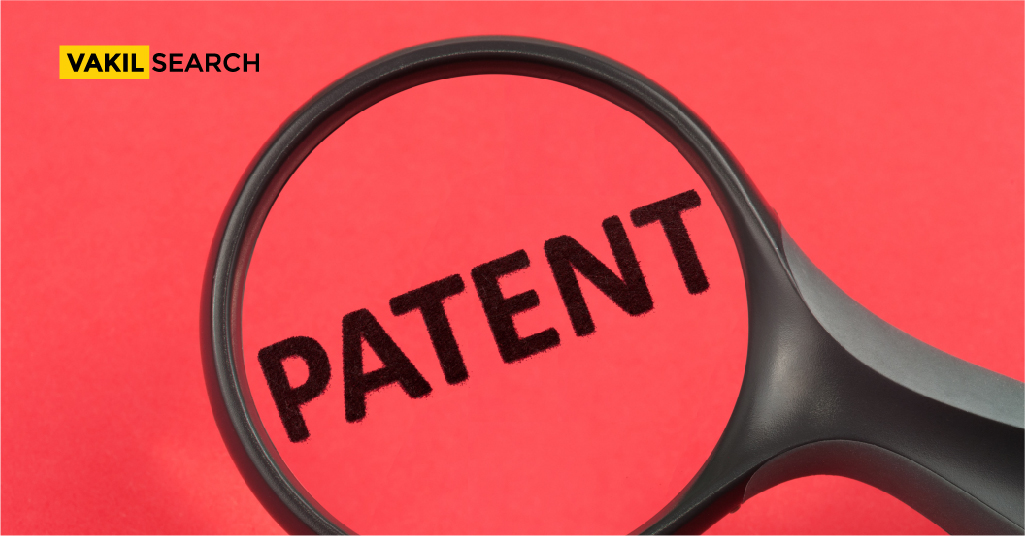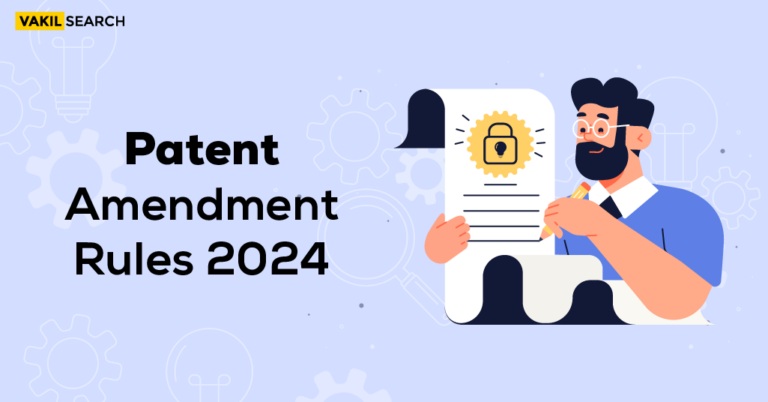See into the intricacies of patent costs in India, covering government fees, professional services, and the overall investment needed to safeguard your invention through the patenting process."
Overview
In India, obtaining a patent involves expenses related to government fees, professional services, and different stages of the process. Government charges cover filing, examination, and grant, varying based on factors like applicant type and invention nature. It’s crucial to grasp these fees for accurate budgeting. Hiring a patent professional is vital, and their fees include tasks like application preparation and compliance. The patent process unfolds in stages—filing, examination, publication, and grant—each with associated costs. Understanding these Patent cost helps applicants plan their finances for a seamless patent application journey.
A patent is to get protection or exclusive right granted for an invention on a product or a process – it can be a design, formula, or a method that can be patented for a limited period, according to its originality, utility, and suitability. This helps to safeguard the invention or the process and will enable the proprietor to stop any other person with no right or consent from making, using, marketing, or smuggling that product into India.
Other words used for patents are; proprietary, copyrighted, exclusive, registered, trademarked, and branded. Nearly anything can be patented. Machines, articles made by machines, medicines, compositions, chemicals, biogenetic materials, computer programs, etc., can all be patented.
Patent rights on its products or processes increase the value of a company. These rights are meant for creating a blockade against the entry of the competitors, thereby generating a bigger market share for the original owner of the patent.
Types of Patent Applications Granted in India
- Provisional Patenting Application
- Non-Provisional Patenting Application
- Convention Patenting Application
- International Patenting Application under the PCT
- Patenting Application in the National Phase of the PCT
- Patenting of Addition Application
- Divisional Patenting Application
Provisional Patenting Application
It is a temporary kind of application, filled when an invention is under process or experimentation is not yet finalised. The Indian Patent system follows the ‘First to File’ system on a first-come, first-serve basis. The application should be brief and drafted meticulously.
To prevent or protect an invention, an applicant may file a provisional patenting application. It is just the start, and you will need this patent for protecting your labour of creative genius.
Non-provisional Patenting Application
It is considered a regular utility patent application. It protects your intellectual property from companies or people who may try to make, use, or sell your invention. It includes a full description of your invention with all the variations, designs, compositions, methods, etc. This application form is very long. It contains many parts, and each part has many rules. The following items are included in a comprehensive specification: –
- An introduction to the invention
- The invention’s technological field
- The invention’s history
- The invention’s objects
- A description of the creation
- An explanation of the drawings in a few words
- A thorough explanation of the creation
- Complaints
- Synopsis
Convention Patent Application
Convention Patent filing allows an individual to benefit from the primary application by retaining its priority date; it is filed in the Patent Office, claiming a priority date based on the same application previously filed. Application is to be filled in the patent office in India within one year from the actual date of the first application.
International Patent Application Under the PCT
Under the PCT, you can file an international patent application. A PCT Application, as the name implies, is a worldwide application. Even though the application does not assist in the preparation of international patent applications, it does pave the way for a faster patent application process in several nations. The Patent Corporation Treaty, that can be validated in as many as 142 countries, governs patent rights. This filing would safeguard an invention in these nations from being duplicated.
The IPO, or the Indian Patent Office, serves as the receiving office for this application, which an Indian applicant can submit. WIPO’s International Bureau, either after getting a foreign filing permit from the IPO or making an appeal in India for six weeks or twelve months.
Patent Application in the National Phase of PCT
The application enters the National Stage PCT application within 31 months of the relevant date. A PCT patent application’s National Phase is similar to a national filing in a particular country. That country’s Patent Office indeed decides to accept patent protection in a given nation.
Patent of Addition Application
The PCT national phase application is a unified submission for a patent application across PCT participating nations (Patent Cooperation Treaty). This simplified procedure gives patent protection. The application must be filed within 31 months of the relevant date or the date of foreign patent filing, whichever comes first.
According to the National Application, the heading, explanation, summary, and claim filed in the International Application for Patent under PCT are detailed specifications. Aside from that, the same regulations apply here as they do when filing and processing a standard patent application.
Divisional Patent Application
These applications were filed after the original patent application because of the mentioned multiple inventions. Here, an applicant can split his application into two or more applications and furnish details if it claims to include various inventions. It’s a patent application that incorporates information from an earlier application (original application). Each inventor’s multiple innovations are protected separately by this ‘Divisional Application’. The priority date for these applications is similar to that of the original application.
Government Patent Fee
This fee is a compulsory payment to the patent office and varies depending on the applicant type. The Indian patent office categorizes applicants into natural persons and others. The breakdown includes:
Natural person / Startup / Small entity / Educational institute – Encompassing patent applications from individuals, startups, small entities, or educational institutes.
Other entities – Pertaining to large entities that don’t fall into the categories mentioned above. This covers enterprises not meeting the criteria of the entities specified earlier.
Professional Patent Fee
If you opt for the services of a patent firm or a patent expert, in addition to the government fees, you will also incur professional fees from the patent firm. While it’s not obligatory to engage a patent firm, and you have the option to handle the entire patent process independently, seeking professional assistance is strongly advised, especially if you are earnest about safeguarding your invention.
Choosing the right professional firm can significantly enhance the value of your invention and assist you in presenting a well-crafted application. However, this professional assistance comes at a price, constituting a significant portion, ranging from 75% to 95%, of the overall fee. If you are uncertain about finding reputable patent firms, Zatalyst’s curated list of leading patent and IPR firms in India is a valuable resource to explore.
Cost for Patent in India as Per Stages
The patent application process unfolds in multiple stages, each with associated costs. These stages typically include filing, examination, publication, and grant. Knowing the costs at each stage allows applicants to plan their finances strategically and ensures that they are prepared for the financial commitments at various milestones of the patent journey.
- Initial patent filing ₹15,000.
- Fee for filing provisional patent application: Complete patent filing after provisional patent application ₹20,00
- Filing a comprehensive patent application (rather than a provisional patent application) ₹30,000
Here are a few more:
- Research for Patentability in India: It is an optional step that takes eight to ten working days to process and patent cost ₹10,000.
- To Write and File a Patent: For a person, a small business, or a large organisation, the official charges for applying are ₹1,600, ₹4000 or ₹8000.
- Request for Immediate Publishing: It is also an optional step; the official charges for seeking earlier publishing are ₹2500, ₹6250, or ₹12500 for individuals, small businesses, and non-small enterprises.
- Request for an Investigation: Individuals filing charges are ₹4,000, small business filing charges are ₹10,000, and other than small business filing charges are ₹20,000.
- Objections Towards the Examination Report (response): Legal expenses for responding to the patent office’s examination report range from are ₹6,000 to ₹20,000, based on the complexity and number of objections.
Conclusion
The Controller General of Patents, Designs, and Trade Marks (CGPDTM) of the IPO is an organisation which is part of the Department for Promotion of Industry and Internal Trade that functions to manage various aspects of Indian patent, design, and trademark law. The IPO issues a patent for 20 years, subject to the payment of renewal costs, as patents must be renewed annually.
The IPO handles cases related not only to patent applications but also renewals, patent infringement and litigations. While the type of patent has the greatest impact on costs, there are other factors to consider, such as the size of the company or the sort of individual asking for a patent, which can also impact the overall cost of the patent.
Individuals are more likely to pay less than start-up businesses, and large organisations are ready to pay a lot for their patents. It will be a lot expensive if the creation has a lot of technology. Creators will often tend to apply more money in a solid market to ensure that their idea is well protected. Innovators must exert more significant effort to demonstrate that their new inventions are sufficiently original to warrant a patent in a crowded market. It costs more money to protect a creation’s idea in multiple nations.
FAQs on Patent Cost in India
1. Does patent need money?
Yes, obtaining a patent involves various costs, including government fees and, if you choose, professional fees for assistance. While it requires a financial investment, a patent can provide legal protection and potential commercial benefits for your invention.
2. Why is a patent so expensive?
The costs associated with obtaining a patent stem from government fees, which vary based on the type of patent and the stage of the application process. Additionally, if you hire professional services, their fees contribute to the overall expense. The complexity of the patent system and the expertise required for a successful application contribute to the perceived expense.
3. Are patents profitable?
Patents can be profitable for inventors and businesses. They provide exclusive rights to the inventor, preventing others from using, making, or selling the patented invention. This exclusivity can lead to competitive advantages, market share, licensing opportunities, or even the potential sale of the patented technology, making patents a valuable asset for profitability.










